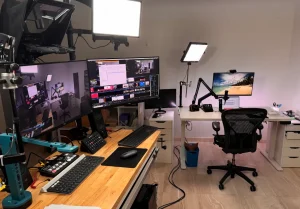Climate-Resilient Investment Portfolios: Future-Proofing Your Wealth in a Warming World
4 min read
Let’s be honest. The weather isn’t just small talk anymore. It’s a front-page, market-moving, portfolio-shaking reality. Wildfires, floods, supply chain disruptions—these aren’t abstract risks in a distant future. They’re happening now, and they’re costing billions.
So, what does that mean for your investments? Well, it means the old rules are shifting. A climate-resilient investment portfolio isn’t just a “green” choice for tree-huggers. It’s a pragmatic, strategic necessity for anyone who wants to protect and grow their wealth. It’s about building a financial house that can withstand the coming storms, both literal and metaphorical.
What Exactly Is a Climate-Resilient Portfolio, Anyway?
Think of it like this. You wouldn’t build a house on a floodplain without elevating the foundation, right? A climate-resilient portfolio is that elevated foundation. It’s an investment strategy designed to navigate and even capitalize on the profound economic shifts driven by climate change.
This approach tackles two main types of risk:
- Physical Risks: These are the direct hits—the factories damaged by hurricanes, the crops lost to drought, the real estate devalued by sea-level rise. You know, the tangible stuff.
- Transition Risks: This is the fallout from the response to climate change. As the world pivots to a low-carbon economy, companies reliant on fossil fuels face stranded assets, new regulations, and shifting consumer demand. It’s the risk of being on the wrong side of history.
A resilient portfolio aims to minimize exposure to these risks while actively seeking opportunities in the solutions. It’s not about avoiding all risk—that’s impossible. It’s about being on the right side of the biggest economic transition since the Industrial Revolution.
The Core Pillars of a Future-Proof Portfolio
Building this kind of portfolio isn’t about one magic stock. It’s a mindset, a framework. Here are the key pillars to consider.
1. Embrace the Green Engine: Climate Solutions
This is the offensive play. It’s about investing in the companies and technologies building the future. We’re talking about renewable energy, obviously—solar, wind, geothermal. But look deeper. Think about the entire ecosystem.
- Energy Storage & Grid Modernization: What good is solar power if we can’t store it for a cloudy day? Batteries and smart grid tech are the unsung heroes.
- Sustainable Transport: Beyond just EVs, this includes charging infrastructure and public transit solutions.
- Circular Economy & Resource Efficiency: Companies focused on recycling, water conservation, and sustainable agriculture. They’re doing more with less, and that’s a powerful long-term bet.
2. Fortify Your Defenses: Physical Resilience
Some sectors are simply better positioned to weather the physical impacts of climate change. This is the defensive part of your strategy.
Consider essential services like water utilities or telecommunications. Their infrastructure is critical, often regulated, and likely to be hardened against disruptions. Also, look at companies with robust, geographically diversified supply chains. A company with a single factory in a hurricane zone is a much bigger risk than one with a global, adaptable network.
3. The Great Shift: Avoiding Stranded Assets
This is perhaps the trickiest part. It involves a deliberate, critical look at your current holdings. Stranded assets are investments that lose value prematurely due to climate change. The classic example? Vast reserves of oil, gas, or coal that simply cannot be burned if we’re to meet global climate targets.
This doesn’t mean you have to divest from every energy company overnight—though some do. It does mean scrutinizing companies that are heavily reliant on carbon-intensive models and have no credible transition plan. Are they investing in alternatives? Are they managing their emissions? If not, they represent a significant transition risk.
How to Actually Start Building Your Portfolio
Okay, theory is great. But let’s get practical. How do you, as an individual investor, put this into action without getting a PhD in environmental science?
- Look Under the Hood with ESG: ESG (Environmental, Social, Governance) ratings are a starting point. They’re not perfect—far from it—but they provide a lens to assess a company’s climate risk and overall sustainability practices. Use them as a filter, not the final answer.
- The Power of ETFs and Mutual Funds: Honestly, this is the easiest way for most people. There’s a booming market for ETFs focused on low-carbon, clean energy, and climate resilience. You get instant diversification across dozens of companies aligned with this theme.
- Engage and Ask Questions: You’re a shareholder. Use that power. Read company sustainability reports (look for TCFD or SASB frameworks). Vote on shareholder resolutions related to climate risk. It signals to management that this issue matters to their investors.
A Snapshot of Climate-Aligned Sectors
| Sector Focus | What It Encompasses | Potential Opportunity |
| Clean Energy | Solar, wind, hydrogen, geothermal power generation | Massive global build-out to replace fossil fuels |
| Energy Efficiency | Smart grids, LED lighting, building insulation, industrial efficiency | Low-hanging fruit for emissions reduction; cost-saving |
| Sustainable Food & Water | Precision agriculture, water treatment, irrigation tech, plant-based proteins | Addressing resource scarcity for a growing population |
| Adaptation & Resilience | Climate-resilient infrastructure, disaster recovery, early warning systems | Necessity-driven growth as physical climate impacts intensify |
The Bottom Line: It’s Just Smart Investing
In the end, building a climate-resilient investment portfolio isn’t a niche strategy. It’s a fundamental reassessment of risk and opportunity in the 21st century. It’s about recognizing that the companies that will thrive are the ones that see the changing landscape not as a threat, but as the new playing field.
They are the innovators, the adapters, the problem-solvers. By aligning your capital with them, you’re not just hoping for a better world. You’re actively investing in its inevitability. And that might just be the soundest financial decision you can make today.








